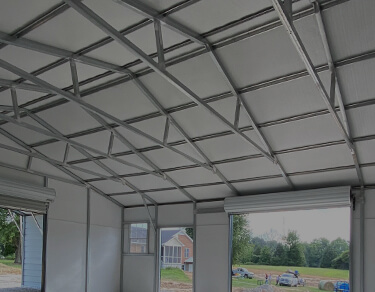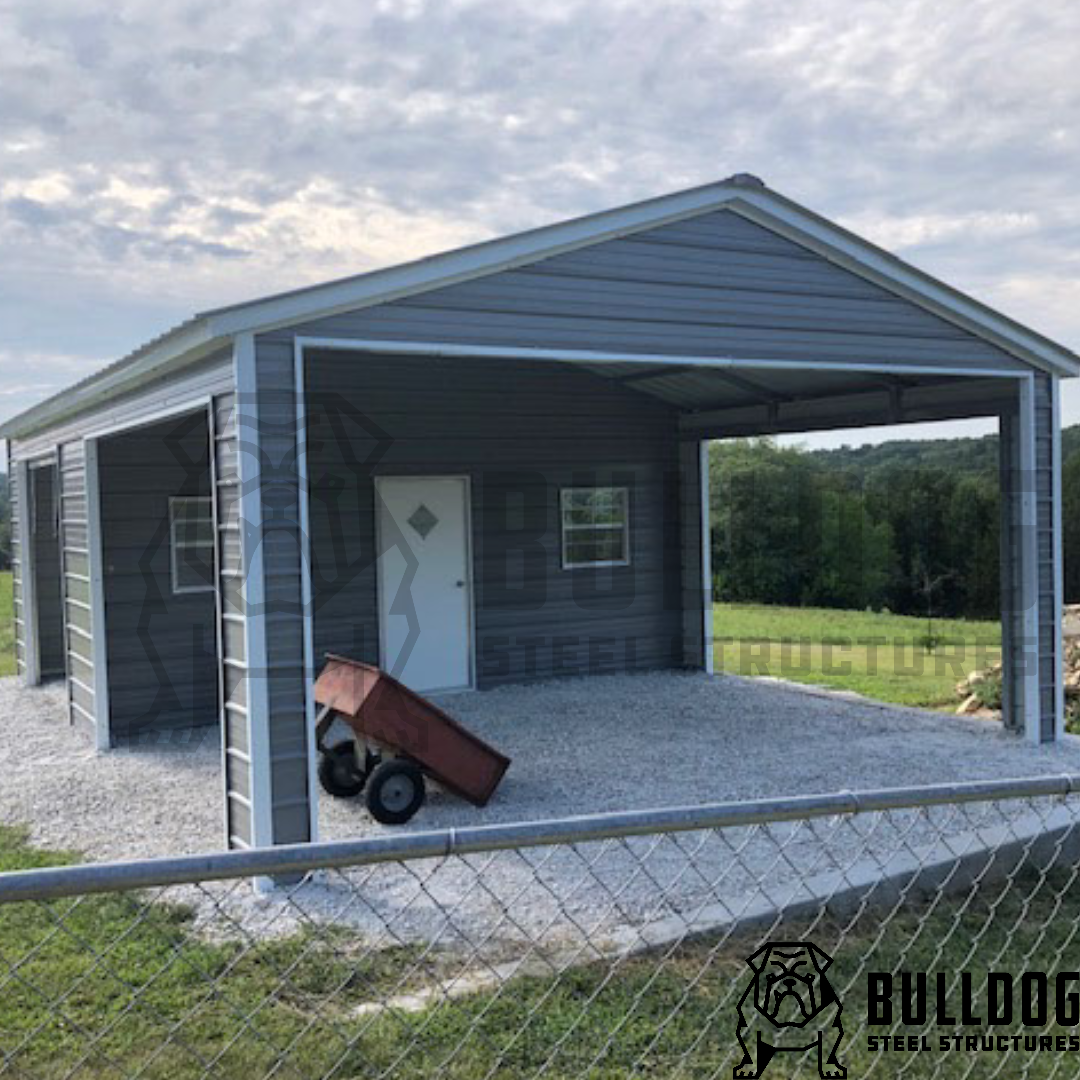
Pros and Cons of Insulated vs. Non-Insulated Metal Buildings

The practice of insulating is among the first major choices that come to mind when you invest in a custom metal building, and it has the most significant impact on the building. Insulation may seem like an added feature, but it has a substantial effect on factors such as all-weather comfort, monthly operating costs, and even the future value of the building. In this guide, we will take a step-by-step approach to the advantages and disadvantages of insulated and non-insulated metal buildings, allowing you to determine which one is most suitable for your intended use, budget, and climate zone.
Understanding Insulation in a Custom Metal Building
An insulated Prefab metal building also has control over the temperature, humidity, and noise. Common ones, such as fiberglass, spray foam, and reflective foil insulation, work by limiting the heat transfer between the building’s interior and the exterior environment. Metal panel buildings are often non-insulated, and in such cases, it is possible to find that the interior environment’s temperature is unbearable, especially in extreme climate conditions.
Pros of Insulated Metal Buildings
1. Energy Efficiency & Lower Operating Costs
Insulation reduces the workload of HVAC equipment, resulting in smaller units, shorter run times, and consistently decreasing electric bills. In commercial facilities, those savings can deliver a payback on the insulation upgrade in just a few years.
2. Condensation Control
Temperature swings cause metal surfaces to “sweat.” Condensation dripping from the ceiling can ruin stored goods or corrode machinery. A properly installed vapor barrier or spray foam layer keeps warm, moist air away from cool surfaces, preventing those costly moisture problems before they start.
3. Enhanced Comfort & Livability
Insulation makes the interior of any building, whether it is an office suite, retail space, showroom, or hobby shop, quieter and cozier. This is especially beneficial when dealing with an existing building that is used as a custom metal building. Improved acoustics and a constant temperature create a professional environment that interests both employees and clients.
4. Compliance With Energy Codes
Minimum R-values are often now a requirement at the time of construction of new commercial or mixed-use buildings in many jurisdictions. Installing insulation during new construction also ensures compliance with local building authorities’ regulations and helps avoid costly upgrades or fines in the future.
5. Higher Resale & Lease Value
Having an insulated facility will provide an advantage in offering high lease rates and the potential to increase sales, as an interested tenant or serious buyer can immediately realize their operational savings. This makes it a good long-term investment for owners who are concerned about ROI.
Also Read: Think Outside the Toolbox: 9 Unexpected Ways People Use Rent-to-Own Metal Buildings
Cons of Insulated Metal Buildings
1. Higher Up‑Front Cost
Materials, labor, and any custom vapor-barrier work can add 10–15 percent to the total project budget. While energy savings offset the expense over time, the additional capital may stretch a tight construction budget.
2. Longer Construction Timeline
Spray foam requires curing time; batt or rigid board systems demand careful fastening and sealing. These extra steps mean your project could take days or weeks longer than a non‑insulated equivalent.
3. Reduced Interior Clearance
Batt and board insulation adds thickness to wall and roof assemblies. In smaller buildings, that might marginally reduce interior dimensions or require creative framing solutions to preserve headroom.
4. Potential for Trapped Moisture—If Done Incorrectly
Poorly installed or unvapor-barrier insulation can cause the insulation to trap moisture against the metal panels, allowing corrosion to develop hiddenly. It is crucial to have a qualified contractor who follows the manufacturer’s guidelines and specifications.
Pros of Non‑Insulated Metal Buildings
1. Lower Initial Cost
The uninsulated option saves on material and labor costs and allows the budget to be used on other bespoke options, such as mezzanines, roll-up doors, or special equipment.
2. Faster Project Completion
Since insulation does not require the building to be measured, cut, and installed, it can be built and inhabited faster. It is a plus in the seasons when the builder is faced with an upcoming deadline or a specified lease is about to expire.
3. Adequate for Open‑Air or Equipment Storage
If your custom metal building will serve as a hay barn, equipment shed, or open‑sided pavilion, insulation may be unnecessary. The increased airflow can even help reduce mold or mildew on stored items.
4. Minimal Maintenance
There’s no insulation to repair, replace, or monitor for moisture damage. This can simplify upkeep when the structure’s primary role is rugged, utilitarian storage.
Cons of Non‑Insulated Metal Buildings
1. Temperature Extremes
Metal panels conduct heat rapidly. In the summer, interior temperatures can soar well above the ambient temperature. In winter, a poorly insulated building can feel like a walk‑in freezer, making it impractical for people, pets, or climate‑sensitive inventory.
2. Condensation & Corrosion Risk
Without insulation, moist air hitting a cool steel surface condenses into water droplets. Over time, this moisture accelerates the formation of rust on framing members and can drip onto stored goods, causing damage.
3. Higher Long‑Term Operating Costs
Should you eventually decide to add heating or cooling, the utility bills will be steep because the building envelope offers little thermal resistance. Retrofitting insulation later is typically more expensive than installing it during initial construction.
4. Reduced Noise Control
Rain pounding on an uninsulated metal roof or machinery operating outside can create a loud interior environment in workshops, offices, or retail spaces, which can impact productivity and the customer experience.
Key Factors to Consider When Deciding
- Climate Zone – Hot, humid, or frigid regions gain the most from insulation.
- Building Purpose – Human occupancy, temperature‑sensitive goods, or sensitive equipment usually require insulation.
- Usage Hours – Structures occupied only seasonally or sporadically might justify partial or no insulation.
- Budget vs. ROI – Weigh up‑front savings against decades of utility bills and potential retrofits.
- Local Codes & Incentives – Rebates for energy‑efficient construction can offset installation costs.
Energy Codes, Climate Zones, and ROI
Insulation is commonly mandated by building codes, such as the International Energy Conservation Code (IECC), when prescribed according to your climate zone, particularly Zone 4 or higher. Insulation proves to be a worthwhile investment at the front end, even in warmer regions, due to rising energy prices and available tax breaks. Tests indicate that a covered do-it-yourself metal building can reduce energy consumption by as much as 45%, typically recovering its initial investment in just a couple of years.
Conclusion
Insulation isn’t just an upgrade but can also be an intelligent investment, as it affects not only comfort but also energy savings and long-term durability. Although insulated custom metal buildings are suitable choices for all seasons, non-insulated ones are more applicable in simple back storage or open-air applications. No matter your preference, Bulldog Steel Structure delivers custom metal buildings tailored to your specific needs, climate, and budget.
FAQs
- Is insulation really necessary for a metal building?
Only if you need temperature control, moisture protection, or noise reduction, for basic storage, non-insulated buildings can work just fine. - What are the biggest cost differences between insulated and non-insulated metal buildings?
Insulated buildings are expensive to construct, but energy costs are saved. The non-insulated ones are the cheapest initially, even though they might add to the long-term operating costs. - Can I add insulation later if I choose a non-insulated building now?
Yes, but it’s usually more expensive and less efficient than insulating during initial construction.
delivering & installing
throughout
the united states
Bulldog’s metal barns, garages, and carports are available for delivery and installation in most of the U.S. Whether you’re a homeowner in Maine, a rancher in Texas, or a small business owner in California, you’ll get to-your-door delivery and professional installation, so your building will be sturdy and reliable for years to come.
See Service Area